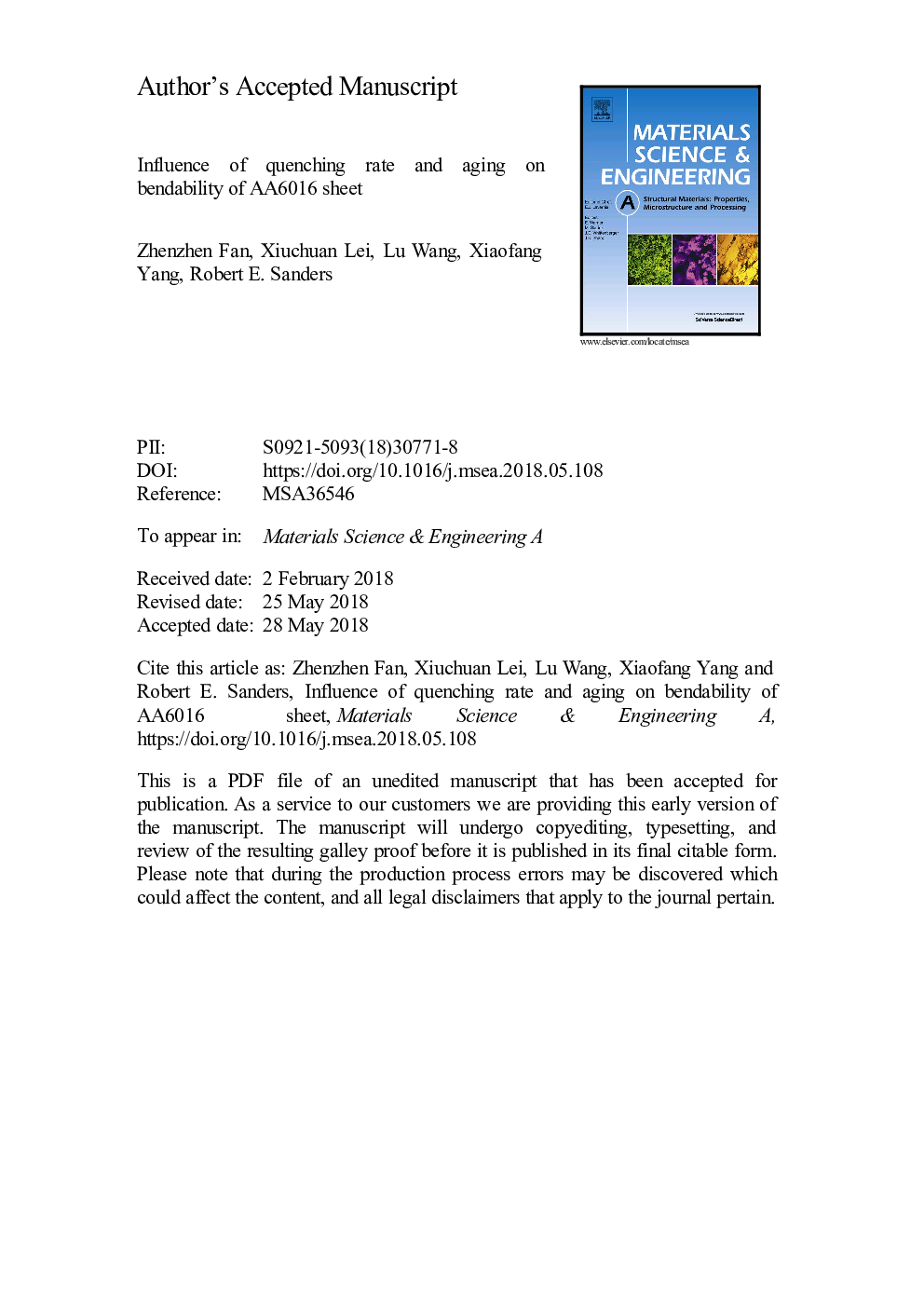| Article ID | Journal | Published Year | Pages | File Type |
|---|---|---|---|---|
| 7971806 | Materials Science and Engineering: A | 2018 | 28 Pages |
Abstract
The present work studied the effects of quenching rate and aging conditions on the microstructure and mechanical properties of AA6016 automotive sheet. Significant differences in mechanical properties were observed after solution treatment and quenching at three different rates. The rapidly quenched alloy showed a better combination of properties compared to the slowly quenched material in both naturally and artificially aged tempers. Slow quenching resulted in coarse Si and Mg2Si precipitates along the grain boundaries that affected fracture behavior during 180° bending of T4 material. After artificial aging, a separate type of bending test indicated that the energy absorption capability of alloy 6016 is seriously impacted at slow quench rates. Electrical conductivity (EC), Vickers micro-hardness (HV), scanning electron microscopy (SEM), transmission electron microscopy (TEM), as well as bending tests were used to follow microstructure and mechanical property changes during natural and artificial aging.
Related Topics
Physical Sciences and Engineering
Materials Science
Materials Science (General)
Authors
Zhenzhen Fan, Xiuchuan Lei, Lu Wang, Xiaofang Yang, Robert E. Sanders,
